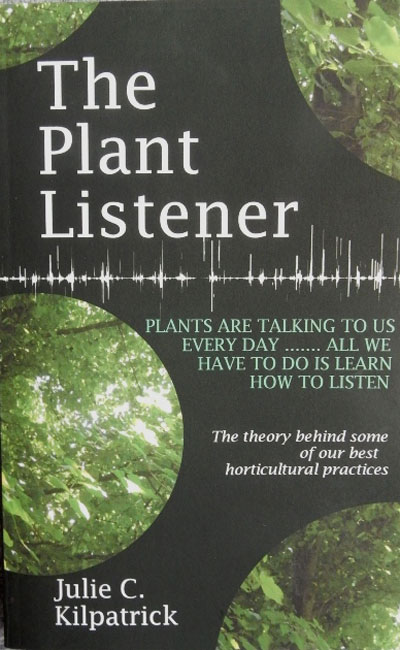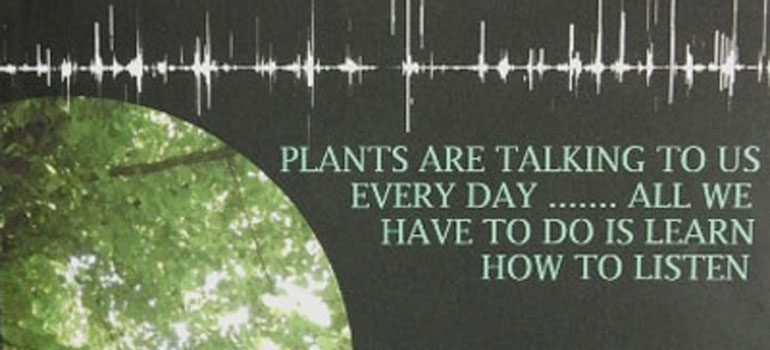The Plant Listener, by Julie C. Kilpatrick – Book Review
We independently evaluate all recommended products and services. If you click on links we provide, we may receive compensation.
The Plant Listener by Julie C. Kilpatrick has two statements on the cover explaining Kilpatrick’s intent. “Plants are talking to us every day …. All we have to do is learn how to listen.” With that, she takes us on a journey of discovery, showing us how plants have evolved and, given that, how best to care for them. There are no photographs or other images, but her words and explanations are clear (and sometimes humorous).
Kilpatrick is a gold medal-winning garden designer and lecturer in garden design, landscaping, and horticulture. She is editor of the online gardening advice website http://www.gardenzine.co.uk.
The Plant Listener
Author: Julie C. Kilpatrick
Paperback: 308 pages
Publisher: Gardenzine Publications; 1 edition (April 23, 2018)
What if Plants Had Brains?
This preface opens with a startling statement, “If plants had brains, they would probably have just one thing on their minds, and that’s sex.” Plant sex is indeed covered liberally in the five sections of the book. Those of us who have been planting pollinator gardens will understand this simple truth. Hers was not an original statement. She quotes Charles Darwin who ‘believed that the tips of a plant’s roots acted like the brains of one of the lower animals, receiving information from its environment, communicating that information to other parts of the plant and directing movement accordingly.” This first of five sections of the book begins to explain how this happens.
Part One: The Evolution of Plants
 It took eons for the bacteria and algaes found in the oceans to evolve into mosses and liverworts. Then it took more eons to evolve and give birth to seed bearing plants. Domestication of plants is what brought about the domestication of humans. Cultivating wheat was a big development and gave humans more control of their food sources. Besides this kind of science, Kilpatrick offers humor and gives practical information about caring for the seeds produced by your own plants.
It took eons for the bacteria and algaes found in the oceans to evolve into mosses and liverworts. Then it took more eons to evolve and give birth to seed bearing plants. Domestication of plants is what brought about the domestication of humans. Cultivating wheat was a big development and gave humans more control of their food sources. Besides this kind of science, Kilpatrick offers humor and gives practical information about caring for the seeds produced by your own plants.
Part Two: Sex on the Brain
This section is obviously about sexual reproduction. Throughout the book, Kilpatrick uses charming analogies to make it easy to understand the science. All dressed up in its finery of color and shape “the plant is sending out a clear signal. I’m here, and I’m sexy. Come and get me.” Those flowers don’t limit themselves to one technique of pollination. They can throw their pollen to the winds, or make sure their petals have the necessary allure and shape to make it easy for bees and other pollinators to do their job. She gives a practical list of plants appealing to bees and butterflies.
Kilpatrick writes about unusual seeds like the world’s largest seed, the coco de mer seed which takes five to six years to come to maturity. When it is bouncing around on the ocean waves it looks like a female bottom. Sailors in those old days thought they were looking at a mermaid’s bottom.
Part Three: A New Life Begins
This section is all about seeds, their life, development, and needs. The practical advice in this section has to do with caring for your seeds and how to plant them indoors. Once started, there is more advice on necessary light and the hardening off that is necessary before planting in prepared garden soil. There is also advice about pruning shrubs, and step by step directions for cloning plants by stem cuttings.
Part Four: Worshipping the Sun
Sunlight is vital for all plants, but in different amounts. Foliage colors and shapes indicate what light the plant needs. Some plants, the epiphytes, live in high in rain forest trees, getting all the nutrition and water they need without soil.
Part Five: Getting Enough to Drink
Like us, all plants are vascular with a system that moves water, oxygen, and nutrients to all parts of the plant just as blood travels to all parts of our human bodies. It is in this section that Kilpatrick explains the ways plants do talk to each other and offer support to each other.
Part Six: We All Have to Die Sometime
Though this section is about death – and compost, it touches on all types of flowering plants, including trees and shrubs. There is even advice about design, and how to plant flowers in groups of three, or five or seven.
Recommendation
The Plant Listener is a small book with a big story and I recommend it to gardeners who want to understand more about the evolution and science of plants. Kilpatrick’s science writing is brief and clear. Her object is to show us how plants have developed and give some practical information on how to care for them.
Where to Buy
You can buy The Plant Listener by Julie C. Kilpatrick at Amazon where it's available in both Kindle and paperback format.
- Paperback: 308 pages
- Publisher: Gardenzine Publications; 1 edition (April 23, 2018)
Last update on 2024-04-19 / Affiliate links / Images from Amazon Product Advertising API
Enjoyed This Review?
If you liked this review, please sign up for our email updates with reviews, how-to articles and gardening videos!



